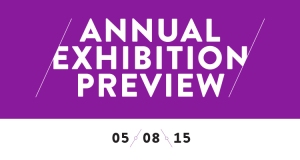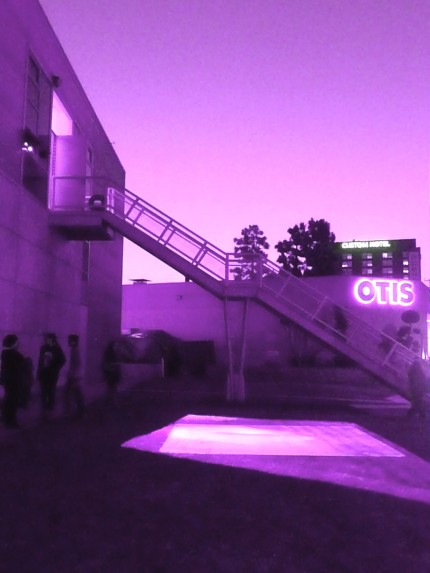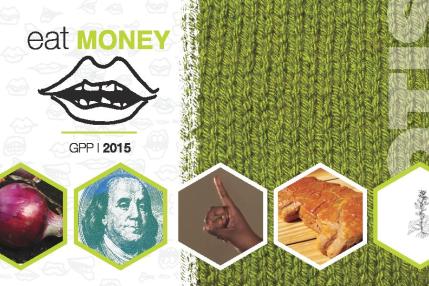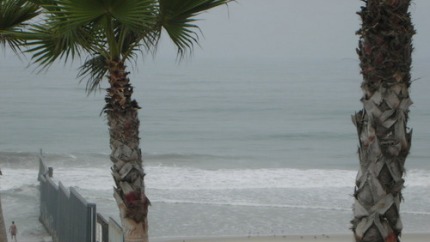Tag Archives: academia
TIJUANA
Corridor/Canyon/Estuary
Flood/Camino
River
Neighbour/NeighbourhoodFence
Spectator/Spectacle
Trip/Tripping
Thinking of Tijuana
Thinking of Italy, Berlin, Beirut
Cultural bridges and divisions at every same corner.
Wondering about shifts and transformations
Concern about time, ethics and exploitation.
Worried to repeat the same western errors.
*******************
TIJUANA: EDITED AND POLISHED
Part one
Can you edit and polish Tijuana?
Systems versus chaos and chaos versus structures: from USA to Mexico and from Mexico to the USA. This was my 3rd crossing of the Tijuana border: the first breath of air across always remarkably exhilarating.
Borders seem to be impregnated with the same energy pervading you with sensations of excitement and anxiety that the Tijuana double reinforced fences accentuate but only barely contain.
In Tijuana, the fence cuts are mended by the people zig-zagging across and stitching the land back together, from a straight symmetrical ‘uneven’ blade chop, to an organic more ‘even’ seamed line.
The all surrounding natural and urban landscape seems to be defined by hills, canyons, paseos, corridors and pasajos and by a never ending fence that merges into the horizon dissolving the ocean, breaking up the sky.
To me, that fence marks off separation on one side, alienation on the other. Is that why once inside the USA border one officially becomes an alien? Separation can be bridged, but what about the alienation?
And no matter how exhausted and polluted, the air across tastes of sweet clay scented by the illusion of freedom. To breathe in across the fence is to inhale the sensation of hope that briefly shivers inside the lungs down into the guts and by the time you exhale it’s become intoxicated with the realization of the facts: “http://www.youtube.com/watch?v=Dmqgqq1Pfwo&feature=youtu.be”(1)
In few instants, blurry excited eyes zoom into focus sneaking right back into the world we have left behind, the world that we create.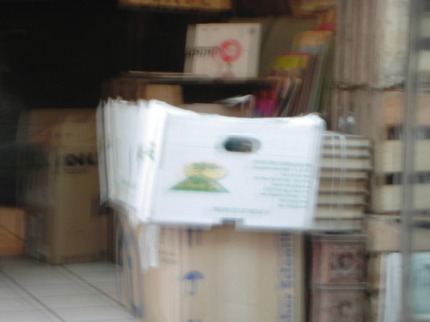
In Tijuana the river has dried out of water and is being flooded by people who carve into their land to create a clay sculpture of life. A living artwork, a work in process signed everyday by the experiences of their authors.
And the air? The air is contaminated by the fascination for progress.
In Tijuana the aerial tension of illegal cable webs seems to resist the “imposition of western modernity”(2) strangling power and weeding above the fences. Yet like everybody else is being swallowed by “the forces of neo-colonialism exploitation” (3).
Air, the symbol for freedom and life: a necessity. And yet air is only secondary to the everyday survival struggle of poverty, race and justice of crossing borders. But is air not an integrant part tightly interwoven with those very same social justice matters?
Who dared defy the freedom of air; divide the ocean and slice into the landscape of natural beauty and people? Who dares invading the organic nature of life with their systems of fence and structures?
Who put that fence there? Who keeps reminding people of their legality?
Status? One step inside the line you are an emigrant, the next step outside you turn into an immigrant. Another step in the wrong direction and you are deported.
Either ways, you are a migrant, just like birds, if you were not to have to carry a ‘valid’ passport through your migratory journeys.
But if you happen to be an Anglo-Saxon it’s not too bad. Every time you cross you are an invested jetsetter or a global commuter and don’t even have to think, feel nor worry about the border at all, you can just ignore it and keep going right to your final destination.
For everybody else a border is a burden and a business. It’s the business of freedom that you can only enjoy if you happen to be a tourist, unless you come to look at the Tijuana fence as a tourist inside your own country: “http://www.youtube.com/watch?v=-4h8Bf8OW-Y&feature=youtu.be”(4)
Come and stand up in line on the other side of the fence.
To be continued.
– Claudia Borgna
- Casually recorded conversation at la Playas in Tijuana with a by passer.
- Grant Kester, Lesson in Futility Francis Alys and the legacy of May’68, third text, Vol.23, Issue 4, 4th July 2009, 407-420, Routledge, page 416.
- Grant Kester, Lesson in Futility Francis Alys and the legacy of May’68, third text, Vol.23, Issue 4, 4th July 2009, 407-420, Routledge, page 416.
- Casually recorded conversation at la Playas in Tijuana with a by passer.
THE INSPIRATION
THE CANAL
THE CLEAN UP
THE PEOPLE
THE VIDEOS
THE INSTALLATION
THANK YOUS
THE EXHIBITION
I would like to officially thank you: Lili Bernard, Ale McGrew and Tracy Johnsons for participating and supporting this project by contributing with the collection of plastic bags.
THE STATEMENT
EDITED AND POLISHED Camino Verde’s Canal-Clean-Up
“Chi ha tempo non aspetti tempo” Those who have time, do not wait for time, my stepfather Rinaldo used to teach me. That is until the recession hit the world, his country, his business, his family, his health and his credo too.
His story: that of many italian“self-made-men” that resurged out of the ashes of World War II.
His pedagogy and “certified” theory of achievement and production of success accelerated onto the new generations all the way into the cyber universe, where Chaplin’s “Modern Times” machines have been replaced by the Internet. And it is in the internet’s over populated abysses these words will be roaming in.
Time, production and humanity, what do they have to do with art? All three are men’s constructions that can be destructive. What happens to humanity when time and production are imposed upon people or even countries? How does it effect people choices? We need time to choose, time to be creative, to build social relations to nourish one another, time is vital. But time is what we were short of during this research project on public practice, which has its focus on creative social relations.
Emergency is the mode I resorted to work into. Emergency and urgency, definitely symptoms of our era that our crammed lives suffer from.
Is it the emergency of success, or is it the imposition of the idea of success or is it the success that we imposed on one another that makes us westerner fret so much?
And don’t get me wrong, I love Rinaldo, really a great deal, it’s just that like every child I have the duty to rebel against the imposition of a rule whose vulnerability every child can easily see through, and so is the rest of the world too now. But how to blame Rinaldo when the imposition of time and of success are concepts that have been perpetuated by history and root and rot in the cradle of western civilization?
No, panic not, because in the end, like every child, I too, learned my lesson well, so, I did not waste my time during this project, but instead tried “to make the most” to learn from it. Learning, that’s what it is all about, in the end. But will we ever be able to truly apply all that learning to the benefit of our humanity? In the meantime, while hoping that it will happen, I am sharing the observations and thoughts that my project of Camino Verde’s Canal Clean-up contributed to forge. This is my statement:
Like the rest of the world, Camino Verde too is facing the problem of how rubbish is contaminating its environment and the negative repercussions this is causing to the life of the local community.
Only part of a greater globalized scheme, the pollution of Camino Verde’s canal has roots in western life-style. Economic and political power-forces lead progress towards a commodified world. Just like western lifestyles, Camino Verde’s canal too is trapped into a structure that prioritizes dehumanizing values rather than caring progressive ones. The neglect of the environment is just one of many imminent symptoms of social injustice that the future of Camino Verde is facing.
How do we dispose of the leftovers of a global society that thrives on consumerism? This shared struggle seems to be better concealed in some places than others in the attempt to make the problem invisible at people’s expenses.
Camino Verde’s Canal-Clean-Up is a crossing that meets at a cultural and human exchange of shared values. It is a joint effort of care and a symbolic act that aims at spreading civic awareness on the importance of local environmental social justice.
To me, the rubbish polluting Camino Verde’s canal is an imported “alien” that is invading the spirit of most of our communities and eventually flows into the mainstream of our precious ecosystem of nature, cultures and human values.
We, people of different beliefs, ideas, backgrounds, and cultures, will met at the Desarrollo Community Center and started walking up the canal to La Casa De Las Ideas. These two main community landmarks of Camino Verde provided us with our reference points.
The Canal-Clean-Up is for me a humbling powerful act. To walk and to clean together with our humble tools: gloves and bags collecting the rubbish that we encountered on our journey inside the canal.
Our gathering and collection was celebrated into a final artwork that I assembled together, again in a simple way, with Hector Garcia Esqueda. Hector is a member of the community as well as an activist and a shaman.
Our bags filled with plastic rubbish were piled up on the Desarrollo Community Center’s courtyard and tied with rope to form a temporary sculpture.
The scope of the artwork was to create an image that manifested a visible message hoping to reach out to include the rest of the community of Camino Verde and furthermore echo out of their neighbourhood across the world’s neighbours.
This temporary artwork was intended as a creative celebration of the clean up and invites to reflection and discussion on how we can affect each other communities. I like to think of it as a visual question mark: an aesthetic sign that punctuates the end of a question.
All along, the Canal-Clean-up participants were invited to document each other via two disposable cameras that this time were kept and looked after in the form of artefacts.
Another important parallel outcome to this project was the video documentation of the Canal-Clean-Up event by Jocelyn Jaime Mejia. Together with the participants’ photos, and Apolonio Rodriguez’s video work, Jocelyn’s film was featured in the exposition at the 18th Street Art gallery in Santa Monica, USA. Bits of the canal’s rubbish collection – now deported to their native place of origin – were also be part of the show.
EDITED AND POLISHED on the other side of the line
The title of this installation: Edited and Polished refers to the prevailing agenda of institutions to omit “reality” but embellish facts in an insincere manipulative manner that ultimately is exploitative and not always to the advantage to the social public but rather to the detriment of the greater. The terms Edited and Polished also lend themselves as ironic pointers towards our impact on the environment and to the rubbish we produce.
I often wonder how the exportation of our western lifestyle can be of any benefit to any non-Euro-American societies. It seems to me that in most cases the freight of democracy dead-ends into the politics of imperialism.
Where from and Where to? These are the next questions that I started to raise during this project in Camino Verde. A practical concern, where the rubbish collected in the canal would end up, turned into a metaphorical existential instance that is comparable to the journey of our waste.
While my overall desire is connect and reach out to people, as an artist, I am very concerned and aware of my ethical stands. Does the pretext of art permit free entering/exiting into any terrain? Are artists the new missionaries or is art the new artists’ “green card”? Can art fill in the fallacies of our western society? Are we empowering people by taking away their right and role of social “converters” by making them dependent from other systems and stripping them off their creative and time management autonomy?
I was able to only partly resolve my involvement into this assigned project by shifting the lens back at our western society: a society desperately in need of help and definitely of more introspection.
It is my belief that by healing our western-society we can stop damaging the world’s natural and social environment. This brings me to my next question: How does western “throw-away” culture affect Camino Verde’s environment?
My project bounced off the words of Alma Teresa Lopez. Alma is an inspirational community leader and a proud single mother actively fighting for the betterment of the community and the future of her children.
In the video work of young Jocelyn I’d like to see the expression of Camino Verde’s future.
It is only with the help of Jocelyn, and the inspirational community leaders, Lupita and Don Polo, that I was able to organize the Canal Clean Up. This was not the first clean up they experienced, I did not introduce anything new to their life, on the contrary it was rather the Community of Camino Verde that humbled me with their graceful and enthusiastic help.
Despite the fact that our individual final aims or needs might differ, we were joined by the same humanitarian effort to create awareness about environmental issues of social justice that burden the future well-being of local communities. In addition I’d like to add that the latter is affected by the relentless course of politics and economics of western consumerist life-style.
Will the process of commodification lead to a global dehumanization of life and culture? I often wonder about that.
Basura (trash) is the second major problem afflicting the community of Camino Verde. It is second to the rising number of single mothers and to gang crime. How are these troublesome issues linked to one another and to the rest of us?
Edited and Polished aims at portraying the messy tight squeeze left between people’s freedom and global social responsibility. During this project theories have often conflicted with feelings. Academia and professionalisation often invaded the true nature of art. Emotions and rules have been trespassing into one another’s realms. In the end is it the need to understand the intrinsic essence of humanity that pushes us through these cluttered corridors: cracks left open by the desire of control or just clogged veins waiting to free themselves from pollution?
Too busy and uninviting, some venture through these passages only to get trapped, others make it all the way to Camino Verde, where in the words of Hector Garcia Esqueda: “there is freedom here” (2).
– (1) Italian saying
– (2) Hector M. Garcia Esqueda, activist and shaman living in the Colonia of Camino Verde
THE BLOG
www.caminoverdecanalcleanup.wordpress.com
THE RUBBISH WE LEFT BEHIND ON OUR LAST TRIP
“RUSHED” EDITED AND POLISHED OTIS’S BLOG VERSION
The title, Edited and Polished, points at the waste society produces and at the impact western “progress” inflicts on the environment. Will the process of commodification lead to a global dehumanization of life and culture? I often wonder about that.
Like the rest of the world, Camino Verde too is facing the problem of how rubbish is contaminating its environment and the negative repercussions this is causing to the life of the local community.
Only part of a greater globalized scheme, literally the pollution of Camino Verde’s canal has roots in western life-style. Economic and political power-forces lead progress towards a commodified world. Just like western lifestyles, Camino Verde’s canal too is trapped into a structure that prioritizes dehumanizing capitalist values rather than caring progressive ones. The neglect of the environment is just one of many imminent symptoms of social injustice that the future of Camino Verde is facing.
Where from and Where to? These are the questions that I started to raise during this project in Camino Verde. A practical concern, where the rubbish collected in the canal would end up, turned into a metaphorical existential instance that is comparable to the journey of our waste.
How to dispose of the leftovers of a global society that thrives on consumerism? This shared struggle seems to be better concealed in some places than others in the attempt to make the problem invisible at people’s expenses whose landscapes are silently invaded by waste and whose lives become polluted by the impositions of western progress.
I often wonder how the exportation of our western lifestyle can be of any benefit to any non-Euro-American societies. It is my belief that only by healing our western-society first, we can stop damaging the world’s natural and social environment.
How does western “throw-away” culture affect Camino Verde’s environment? I was not really able to scientifically answer that question, but to me the rubbish invading Camino Verde’s canal is an imported “alien” that is contaminating the spirit of most of our communities and eventually flows into the mainstream of our precious ecosystem of nature, cultures and human values.
Basura (trash) is the second major problem afflicting the community of Camino Verde1. It is second to the rising number of single mothers and to gang crime. How are these troublesome issues linked to one another and to the rest of us?
The idea of a canal-clean-up bounced, not just off my own observations, but also from the words of Alma Teresa Lopez. Alma is an inspirational community leader and a proud single mother actively fighting for the betterment of the community and the future of her children.
With the help of Jocelyn Jaime Mejia, and other inspirational community leaders like Lupita and Don Polo, I was able to organize the Canal Clean Up. This was not the first clean up they’ve experienced. I did not introduce anything new to their life; on the contrary, it was rather the Community of Camino Verde that humbled me with their graceful and enthusiastic help.
Despite the fact that our individual final aims or needs might differ, we were joined by the same humanitarian effort to create awareness about environmental issues of social justice that burden the future well-being of local communities.
During this project, the overall desire to connect and reach out to people was often overshadowed not just by the lack of time but also mainly by ethical concerns that question my role as a European artist. Can art fill in the fallacies of our western society? Are we empowering people by taking away their right and role of social “converters” by making them dependent on other systems and stripping off their creative and time management autonomy?
I was able to only partly resolve these worries by shifting the lens back at western society: a society desperately in need of help and definitely in need of self reflection.
Finally, Edited and Polished aims at portraying the messy tight squeeze left between people’s freedom and global social responsibility. During this project, theories have often conflicted with my feelings. Academia and “professionalisation” often invaded the true nature of art: creativity and imagination. Emotions and rules have been trespassing into one another’s realms. In the end, is it the need to understand the intrinsic essence of humanity that pushes us through these cluttered corridors? Masses of people press through these clogged veins waiting to free themselves from Western pollution.
Some venture through these narrow passages only to get trapped inside a canal filled with waste, others make it all the way to Camino Verde, where in the words of Hector Garcia Esqueda: “There is freedom here”2.
________________________________________________________________________
1 Alma Teresa Lopéz, Camino Verde’s community leader.
2 Hector M. Garcia Esqueda, activist and shaman living in the Colonia of Camino Verde
